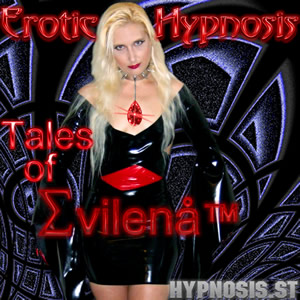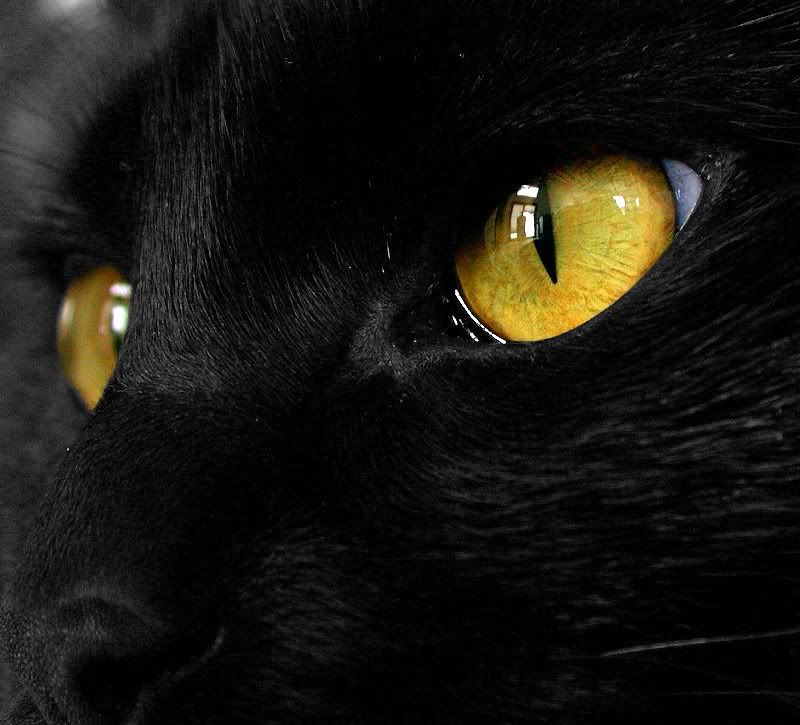The Eight Word Hypnotic Induction
Calvin D. Banyan, MA, BCH, CIThe first time I ever saw an instant induction performed, I was watching a stage hypnotist on television. I simply didn’t believe it. I thought the woman who went instantly limp and presumably hypnotized was just playing along or worse, a shill.
Then next time I saw an instant induction performed was when Gerald F. Kein demonstrated one to our class while I was going through his NGH Certification course. Then I became a believer. I knew it could be done—at least by a master like Mr. Kein with his 25 years of experience (at the time). But, I doubted that I could do them. Now I know any student of hypnosis can master this important technique and we teach it in our NGH Hypnotherapy Certification and Advanced Hypnotherapy courses.
That was back when I was first getting started in hypnosis. I began my career as a Hypnotherapist by mastering a Dave Elman rapid induction, which took two to four minutes to induce somnambulism. But, as my practice grew, I wanted to shorten the induction time, which rekindled my interest in instant inductions.
I began reviewing my training on instant inductions from class and viewed the videotape, Instant And Rapid Inductions In A Professional Practice, produced by Gerald F. Kein. I wrote down everything verbatim. I first practiced the physical aspects of the induction on imaginary clients (a pillow sitting on my recliner in my office). I was not yet ready to attempt one on a living breathing client. This imaginary practice was important because timing is so essential in the kind of instant inductions that I use. I highly suggest that before you begin using instant inductions that you take the time to learn exactly what to say, because you cannot read a script while performing this induction. Also, you should take the time to practice the physical parts of the induction, such as dropping the client’s hand at precisely the right time.
Once I knew that I could perform the procedure as I had seen it done in class and on videotape, I recruited friends and family members to practice on. It did not take long for me to build my confidence, until I was ready to bring those instant inductions into work with me.
Deciding to be very cautious at first, I decided to begin my professional use of instant inductions by stacking the deck a little in my favor. Here is how I did that. In the beginning, I did not use Instant Inductions on a first session. I decided to use them in a second session. In the first session, I continued to use the Elman Induction, but as soon as I had established that my clients were in hypnosis, I would give them the post-hypnotic suggestion that, “The next time we decide to do hypnosis, all I will have to do is drop your hand and say the word, ‘Sleep,’ and you will instantly return to this level of hypnosis or deeper. If that is alright with you, just nod your head.” This way, I could confidently use the Hand Drop Instant Induction; after all, now I was using both the power of induction by post-hypnotic suggestion and the very effective Hand Drop Instant Induction.
Now, I use instant inductions for approximately 75% of my hypnotherapy sessions (including first session), which means I have used them thousands of times. At our hypnosis center we have six Hypnotherapists and we all use them. It is a common occurrence in our office, that when you are walking down the hallway that connects the offices, to hear “SLEEP!” come through the door of any office as another client instantly and reliably enters the hypnotic state, ready to do the work to be done. We also train Hypnotherapists from around the world at our Center, and our students are always excited when they learn about how reliable instant inductions are.
What I have learned is that instant inductions, like the Hand Drop Induction, are the most reliable inductions that a Hypnotherapist can use, and they may be essential in the afternoon or evenings when longer inductions may lull your client into sleep before a hypnotic state is achieved.
When I first started using instant inductions, I only used them with clients whom I expected to be the most hypnotically talented and would go easily into hypnosis. Since then, I have learned through experience that the more difficult the client appears to be, the better choice a instant induction is for the client. By “difficult” I mean clients who appear to be overly analytical, overly tired, have any difficulties concentrating or simply have a very fast way of thinking (i.e., people who talk very fast). Slower methods of induction, such as progressive relaxation, can give you problems which are avoided by using instant inductions.
When I use the term, “Instant Inductions,” I am talking about inductions that take your clients into a deep state of hypnosis instantly. This is what the professional use of hypnosis requires. There are at least four parts to such an induction: 1) focus your subject’s attention, 2) instant redirection of focus (usually a startling stimulus), 3) the word, “sleep,” and 4) instantly deepen the hypnotic state or your client will emerge.
The Hand Drop Instant Induction we use at our Center can is shown below. I am demonstrating the induction and Kathleen Skott-Myhre, M.A., C.H, is the subject.
1) Instruct the client to press down on the therapist’s outstretched hand. See figure 1.
Figure 1 Say "Press on my hand."
While she is pressing down, have your client close her eyes, giving the client two tasks to focus her attention on. See figure 2.
Figure 2 Say "Close your eyes."
2) While the client is pressing down on the therapist’s hand with her eyes closed, the therapist’s hand is suddenly removed, creating the startle response which lasts for a very short period of time, two seconds at the most. During the “instant” your client is in a state of high suggestibility. See figure 3.
Figure 3 Pull your hand out and your subject's hand suddenly falls.
3) The word, “SLEEP,” is said in an authoritative tone and delivery, which instantly induces a deep state of hypnosis. However, if this suggestion is not immediately followed by further suggestions for deepening, your client will emerge.
4) Short and simple suggestions for deepening, such as “go limp and relaxed, continuing to relax further with every breath. As I gently rock your head, your neck relaxes and that feeling of relaxation moves through your entire body.”
Figure 4 Instantly in a directive tone say, "Sleep! And as I gently rock your head you go deeper..."
In its shortest form, it is a powerful and reliable induction that can consist of only 8 words, ”Press on my hand. Close your eyes… Sleep!”
Certainly, more can be done to make the induction look more dramatic (which is something you may want to do in a demonstration or if you are doing stage hypnosis). But the beauty of the instant induction is its sheer simple elegance, so I prefer to keep it as short and simple as it can be. I firmly believe that the shorter the induction is, the more reliable it will be, all other things being equal.
Variations on this simple theme are endless, and once you understand the four essential parts (focus, startle response, “sleep” and deepening) you can go on to create your own versions. The one weakness of the induction is that it does not have a test for depth of hypnosis in it. This is why I recommend that after the initial deepening has been performed, that you borrow a procedure from the Dave Elman induction. Suggest that the client now relax her mind, by counting and relaxing her mind more and more with each number, until they have faded away to nothing. When your client fades the numbers away, you have guided your client into a hypnotic state equivalent (at least) to the threshold of somnambulism or deeper. The losing of the numbers is evidence of amnesia by suggestion, a well accepted test for the threshold of somnambulism.
After achieving the threshold of somnambulism, we recommend that you perform a simple deepening, like counting down from 1 to 5 with suggestion of going deeper. Do this and you will have her in a wonderful state for doing even the most powerful hypnotic techniques, such as hypnotic age regression (with true revivification).
A few words of caution is in order. Because this instant induction requires a hand drop which initially startles your client, you would be ill-advised to use it on someone who is suffering from shoulder, back neck problems or any client with a history of heart problems. Also, this induction does require that you touch your client. Some hypnotherapists prefer not to do so. And, in some rare occasions a client may not be willing to give permission to be touched. Although in our experience, most clients are willing to be touched on the hand, arm, shoulder and forehead as part of a hypnosis session. We have conducted over eight thousand sessions in the last six years and less than ten clients have indicated that they did not want to be touched during the session. And, of course, if the laws where you practice do not allow you to touch your clients, then you would be unable to use this induction method.
Remember, conducting a good pre-talk with your clients is an essential part of the hypnosis process. This is especially true when using instant inductions. Your clients must understand that hypnosis is safe and natural. They must also understand that it is important to follow your instructions.
Consider adding instant inductions to your practice. They are simple, effective and highly reliable. I believe that they always work! Isn’t that what you have always wanted out of a hypnotic induction anyway?
Hypnotic inductions









 Millions of people suffer from the effects of undesirable habits, such as excessive smoking, drinking, etc. Multitudes of these individuals go through life with decreased efficiency, distraught nerves, and a sense of futility and frustration. They are unable to break the compelling force of negative habit by themselves. They need help; but do not know where to find it. Many appeal to their physicians. But, unless the physician has learned to use hypnotism, there is little he can do except give good advice; and every doctor knows that good advice is of little value in cases of excessive smoking or alcoholism. The victim knows the habit is injurious; he is desperately anxious to stop; but cannot do so. Through hypnotic suggestion, he can be helped.
Millions of people suffer from the effects of undesirable habits, such as excessive smoking, drinking, etc. Multitudes of these individuals go through life with decreased efficiency, distraught nerves, and a sense of futility and frustration. They are unable to break the compelling force of negative habit by themselves. They need help; but do not know where to find it. Many appeal to their physicians. But, unless the physician has learned to use hypnotism, there is little he can do except give good advice; and every doctor knows that good advice is of little value in cases of excessive smoking or alcoholism. The victim knows the habit is injurious; he is desperately anxious to stop; but cannot do so. Through hypnotic suggestion, he can be helped.





 The therapeutics of suggestion are based on the fact that a number of diseases can be relieved or cured merely by making the patient believe he will get better, and strongly impressing this belief in his mind. Every capable physician uses this technique to some extent even though he may do so unconsciously. The patient's faith in the doctor and his belief in the efficacy of whatever treatment may be given, is an important factor in all therapy. This use of suggestive therapy is as old as the practice of medicine itself. What hypnotism does is to multiply many times over the force of the suggestion through the greater susceptibility of the patient under hypnosis.
The therapeutics of suggestion are based on the fact that a number of diseases can be relieved or cured merely by making the patient believe he will get better, and strongly impressing this belief in his mind. Every capable physician uses this technique to some extent even though he may do so unconsciously. The patient's faith in the doctor and his belief in the efficacy of whatever treatment may be given, is an important factor in all therapy. This use of suggestive therapy is as old as the practice of medicine itself. What hypnotism does is to multiply many times over the force of the suggestion through the greater susceptibility of the patient under hypnosis. Many cases have been reported of painless childbirth under hypnosis.Treatments should be started as early as possible during the period of pregnancy. Nausea and other common complications can be prevented; and the general health and mental attitude of the patient improved through the use of suitable hypnotic suggestion. Start giving the suggestion that no pain will be experienced at the time of delivery and that everything will proceed normally. Just before delivery, induce deep hypnotic sleep and repeatedly suggest, "There will be no pain—You will help in every way the delivery — with no pain, etc.
Many cases have been reported of painless childbirth under hypnosis.Treatments should be started as early as possible during the period of pregnancy. Nausea and other common complications can be prevented; and the general health and mental attitude of the patient improved through the use of suitable hypnotic suggestion. Start giving the suggestion that no pain will be experienced at the time of delivery and that everything will proceed normally. Just before delivery, induce deep hypnotic sleep and repeatedly suggest, "There will be no pain—You will help in every way the delivery — with no pain, etc.







 The Mind's Eye. The Inner Eye. If you've heard these two phrases before then most likely you've heard of the Third Eye. It is believed that everyone has three eyes: two are physical (they're plain as the eyes can see); the third eye is spiritual; and when opened either through meditation or third eye hypnosis, you unlock the door to numerous possibilities of looking in to the future.
The Mind's Eye. The Inner Eye. If you've heard these two phrases before then most likely you've heard of the Third Eye. It is believed that everyone has three eyes: two are physical (they're plain as the eyes can see); the third eye is spiritual; and when opened either through meditation or third eye hypnosis, you unlock the door to numerous possibilities of looking in to the future.

